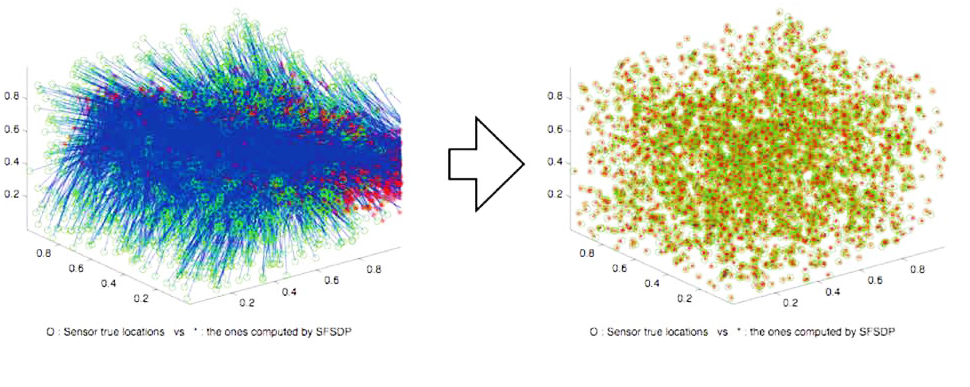Development of Optimization Techniques and Software

WAKI, Hayato
Degree: Doctor of Science (Tokyo Institute of Technology)
Research interests: Optimization, Mathematical Programming
The optimization problem is that of finding the maximum or minimum of a given function over a given set. This problem is widely confronted in industry, as well as daily life. In a recent public statement, IBM asserted that BAO (business analytics and optimization) and the importance of optimization in business are rapidly becoming more and more prominent.
My main research interests are the following: (i) to solve continuous optimization problems, e.g., convex optimization problems and semi-definite programming problems (SDPs); (ii) to develop effective algorithms and software. I am particularly interested in developing methods to solve nonlinear and nonconvex optimization problems by using convex optimization and SDPs. In fact, my collaborators and I have proposed an efficient approach for determining global solutions of optimization problems that are described by polynomials. I refer to such optimization problems as polynomial optimization problems (POPs). We have demonstrated that our approach is effective for POPs that possess a sparse structure. In general, it is known that finding a global solution of a POP is NP-hard. Lasserre and Parrilo independently proposed approaches that use SDPs for the purpose of solving POPs. Although their results are very nice from the theoretical point of view, they are not effective for POPs with more than 20 decision variables. With our approach, some POPs with more than 100 variables can be solved. In this work, we developed the software SparsePOP for solving POPs. This is open-source software and is available at the following site: SparsePOP http://sourceforge.net/projects/sparsepop/
As an application of POPs, we have treated a number of sensor network localization problems, which arise in monitoring and controlling applications in which wireless sensor networks are employed, such as gathering environmental data. Although GPS technology is more suitable than wireless sensors for this purpose, it is usually very expensive for such applications, and thus it is not a feasible option. For this work, we proposed an approach based on our work related to POPs and developed the software SFSDP. This is also open-source software, and it is available at the following site: SFSDP http://www.is.titech.ac.jp/~kojima/SFSDP/SFSDP.html

The figure demonstrates that we can accurately estimate the locations of sensors from distance data with noise using the SFSDP software. The blue lines in the figures represent the differences between the actual locations of the sensors and the locations determined using two methods. The data in the left figure were obtained using an existing method, while those in the right figure were obtained using our method with the SFSDP software. In the left figure, there are many long blue lines. It is thus seen that the existing method cannot accurately estimate the locations of the sensors. Contrastingly, the right figure contains no such long blue lines, and we thus conclude that our method employing the SFSDP software is capable of estimating the locations of the sensors with much greater accuracy.
There are two main difficulties involved in our approach to treating POPs: (1) the resulting SDPs still are too large to handle in the case of POPs that do not possess sparse structure; (2) the resulting problems have too great a degree of degeneracy to solve accurately. As a result of the second problem, it is difficult to find an accurate global solution. In addition, for some POPs, we often encounter phenomena in which the theoretical results differ greatly from the computational results due to numerical errors, e.g., rounding errors in the computation. We welcome collaboration with researchers who are interested in the challenge of overcoming such difficulties and/or researchers who have some practical experience in optimization problems.

